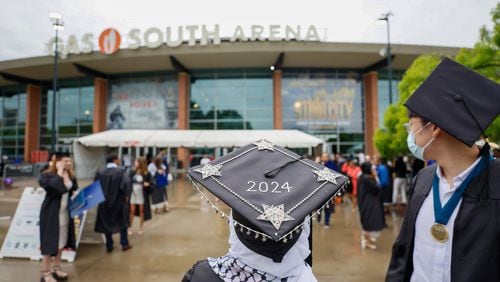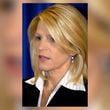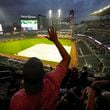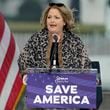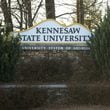From a racing historian’s standpoint, it’s fitting that the Lakewood Fairgrounds property is headed for a new life as a movie-production site. The old one-mile Lakewood Speedway on the Fairgrounds property has produced many a compelling story itself.
The dirt track, known in its day as “The Grand Old Lady” and “Indianapolis of the South” hosted races for horses, cars and motorcycles for most of the 20th century. The track opened with races for horses and motorcycles July 4, 1917, and ended with a harness race in 1983.
Mike Bell, a racing historian from Decatur who has spent years researching Lakewood’s history, said the track’s final race was won by a horse owned by a Georgia stock-car driver Woody Moore.
Here’s a look at some of the bigger stories that occurred between those two horse races.
- Racing historians say the first automobile race at Lakewood occurred on July 28, 1917, between two legends, Ralph DePalma and Barney Oldfield, with DePalma taking the "World's Dirt Champion" title when Oldfield broke an axle.
- One of the key moments in Richard Petty's storied NASCAR career occurred at Lakewood in 1950, when he appeared to have scored his first victory in the series now known as Sprint Cup only to have his father, Lee Petty, successfully protest the scoring and get the win himself.
- In the 1930s, the Atlanta Journal's racing reporter Pete Craig was able to offer a unique perspective on races at Lakewood. He was a regular competitor in the Indy-style roadsters. Craig, who earlier in his racing career set a speed record on the beach at Daytona, had a best Lakewood finish of second place.
- Many other Lakewood stories ended horribly, with drivers killed in spectacular accidents. One of the worst occurred in 1950, when John Edward "Skimp" Hersey's car caught fire. Hersey was able to climb from the car, but he was engulfed in flames. The next day's Atlanta newspapers carried graphic front-page photos of Hersey burning to death. Bell's research indicates that in those days, drivers carried a spare can of fuel in the car in case they ran dry on the backstretch. (Officials rarely threw the caution for a stalled car in those days.) That gasoline apparently spilled on Hersey when his car rolled over, and that led to his death.
- George Robson, an English driver who won the first Indianapolis 500 after racing resumed following a break for World War II, was leading the points standings when the Indy "Big Car" circuit made its annual Labor Day appearance at Lakewood in 1946. He and fellow driver George Barringer died when they came upon a slow car on the dusty backstretch and crashed.
- Lloyd Vieaux, the popular driver known as the "Flying Frenchman," was dominating the Indy car circuit in 1934 when the series arrived in Atlanta for an AAA-sanctioned race.
Among the reporters who interviewed Vieaux was a young Ralph McGill. After Vieaux died in a crash at Lakewood and city leaders were calling for an end to racing at Lakewood, McGill, who went on to become editor of The Atlanta Constitution, wrote articles defending racing and pointing out that Vieaux had told him he would rather die in a race car than lead a dull life as a common working man.
- Lloyd Seay, one of stock-car racing's first nationally known stars, won a Labor Day race at Lakewood in 1939 and died the next day in a shootout in his hometown of Dawsonville after arguing with a cousin over a load of sugar to be used in an illegal moonshine still. Bell, the historian, pointed out that in that Lakewood race, Seay's car number had been changed from his usual No. 7 to No. 13, long considered an unlucky number in auto racing.
- Frank Luptow, who had raced at Lakewood in open-wheeled cars had agreed to grant his wife her wish that he retire from racing because of the dangers, according to Bell. But Sam Nunis, Lakewood's most prolific promoter, convinced him to return to the track and drive a stock car, which was considered much safer than an open-wheel car. After Luptow was killed in a crash in 1952, Nunis never promoted another race at Lakewood.
- Atlanta's aviation-pioneering mayor, William B. Hartsfield, also was a visionary in motorsports. After term limits ended his tenure as mayor, Hartsfield took over the fairgrounds and resurrected racing at Lakewood. Hartsfield had a luxury suite built atop the grandstands years before any NASCAR track followed his lead. Hartsfield also had ideas to shorten the track and pave it, but lost his support from the city.
- The final two stock-car races were held in 1979. An overflow crowd watched Sam Sommers win the Lakewood Sampler, and Buck Simmons, a Georgia short-track legend, goes down in history as the last person to win an auto race at Lakewood.
About the Author
